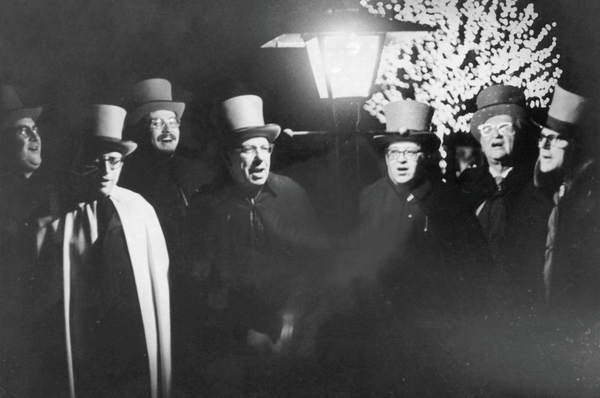Odds are good you’ve never heard the word “wassail.” It derives from the Old Norse word “ves heill” which translates to “be well and in good health.” In the early days of England, people would travel from house to house and use the saying as a way of wishing good fortune on their neighbors. The sayings of good wishes eventually morphed into a song, “Here We Come-A-Wassailing,” and today the tune is better known as “We Wish You a Merry Christmas.” But where did the tradition of caroling really come from? We’re here to find out!
Where exactly does caroling come from?
It’s impossible to imagine the winter holidays without carolers. They are as iconic for the season as Christmas trees and eggnog. While most countries boast their unique holiday traditions, caroling is one that most have in common. You likely learned some of the most famous songs as early as elementary school, and while you may not remember the entire song, certain lines are embedded in our memories. For example, “good tidings we bring to you and your kin. We wish you a Merry Christmas and a Happy New Year” or “jingle bells, jingle bells, jingle all the way! Of what fun it is to ride in a one-horse open sleigh,” both from two iconic carols of the holiday season.

An early version of caroling dates back to the 13th century. It began in the oral tradition, but didn’t always involve Christmas or even singing. In its earliest days, wassailing involved people going house to house giving out well wishes during the colder months. In some places “wassail” was also commonly used to describe a hot and thick spiced beverage given to travelers during the winter to help keep them warm. If the drink sounds familiar, it’s not a coincidence. This medieval spiced drink is the great-great-great grandfather of a modern classic, eggnog.
Singing remained separate from Christmas until Saint Francis of Assisi began incorporating similar sayings and songs of well wishes in his Christmas services. He encouraged the members of his church to embrace music during the holiday season. Saint Francis’ method was a hit, and soon enough people began taking the songs home to enjoy with their families.
These songs stuck to their oral traditions for several hundred years, being passed down from family to family, until some were finally collected, written down, and published in 1582. This helped to solidify the songs in cultures across the world. Soon, they migrated from the church and became a staple activity in holiday celebrations. While most popular carols have been given a modern spin from their former medieval tune, they continue to bring the warm wishes and comfort of the holiday season.

A Short History of the World’s Biggest Christmas Carols
Perhaps one of the most famous Christmas carols is “Silent Night.” Most people who have celebrated Christmas in the United States will at least have a few lines of this song committed to memory, “silent night, holy night, all is calm, all is bright…” The first legend behind the origin of this tune included an Austrian priest by the name of Joseph Mohr. He composed the song on a broken church organ with friend Franz Gruber. It’s widely thought that “Silent Night” was originally a poem written by Mohr. Little did he know that it would grow to become one of the world’s most legendary Christmas carols.
If you can name the gifts from all twelve days in “Twelve Days of Christmas” you’re in pretty good shape for this holiday caroling season. This song is rooted in 18th century England. The foremost theory suggests the song was a memory-and-forfeit game sung by children at the time. “Joy to the World” is another famous carol. This one is different from most others because it contains blatant Christian imagery. The lyrics come straight from the Old Testament, but it wasn’t crafted into an official song until the 19th century.
Caroling in the Modern Day
Caroling today is still deeply embedded in the holiday traditions. According to Pew Research Center, in 2017 about 16% of Americans reported going caroling. Carolers brave the frigid winter air to sing holiday well wishes in neighborhoods and churches across the country. It’s largely symbolic of community. Whether it’s a group of friends and family or strangers, caroling is one of the most favored ways for people to get into the holiday spirit.

